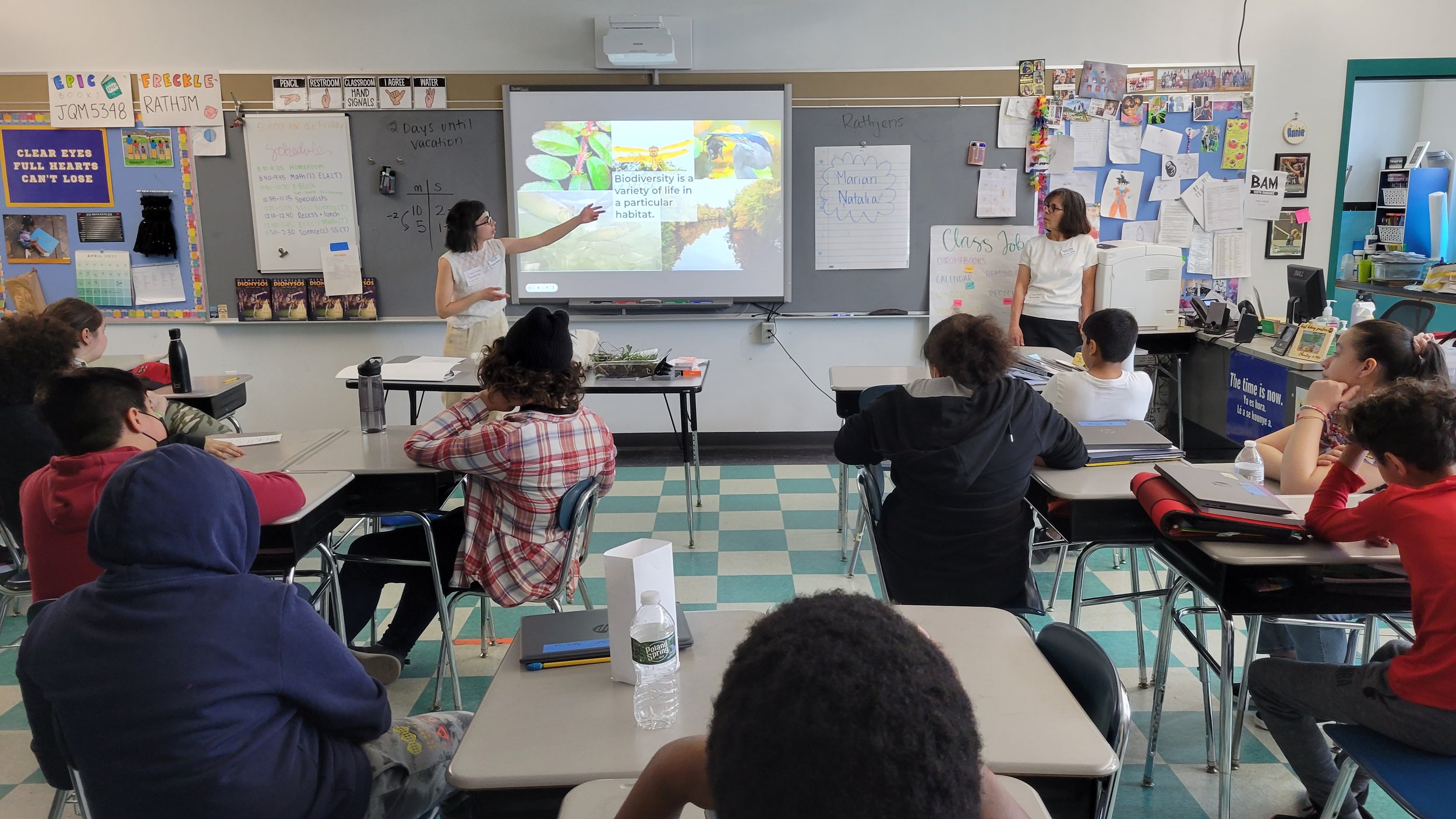Education Programs
For schools and youth groups
Explore STEM concepts in the classroom, school yard or local green space
Think about the local environment and how humans impact ecosystem health
Learn about water quality, biodiversity and climate resilience
Connect ecological concepts to the Mystic River and watershed
Our programs lead students to discover attributes of their local ecosystem thorough watershed educational programming focused on water, local biodiversity, and the intersection of people and natural systems. We connect classroom science content to place-based, real-world ecological issues right outside the door.
Mystic River programs offer a flexible format, taking place outside in-person on school grounds or nearby park, in the classroom as possible, or over virtual platforms. Complete the education request form here or e-mail Alice.Chou@mysticriver.org to discuss your program needs.
Explore Topics
Credit: Chelsea Public Schools
River Herring and Biodiversity
While the Mystic River Watershed is the most urbanized watershed in New England, the river and parks support an abundance of wildlife. This includes the largest river herring migration in the Commonwealth every spring. MyRWA Educators can share more about local habitats and wildlife through activities in the classroom and in the field! Learn more about the activities and our curriculum here. More about plants and animals found in the watershed here.
Field Trips for River Herring in May and June only. Biodiversity field tips in parks spring, summer and fall.
Credit: Chelsea Public Schools
Stormwater and Water Quality
Stormwater pollution is the biggest single source of pollution in our waterways today. Water running into storm drains does not flow into sewage treatment facilities or get filtered in any way, it drains directly into rivers, streams, lakes and ponds. Through interactive programs students learn about the historical uses of the river, test for pollution, discover what stormwater is, how people can help reduce stormwater pollution. The sessions can include an engineering design project, or perhaps going the field to test water quality. Learn more here.
This is our most popular program, MyRWA recommends scheduling the first session in the fall to be followed by a spring biodiversity field trip and session.
Credit: Mike Peterson
Climate Justice
Everyone needs a healthy environment, but that is not always happening. Exploring climate stories of water quality, heat islands, flooding and critical infrastructure are the focus. How are natural systems and human infrastructure strained? What are people in our watershed doing to minimize the impact?
Fish can be polluted, too. Find out more on our fish advisory page. Access curriculum resources here
Credit: Wilderness Inquiry
Canoemobile - fall Only
This “floating classroom” brings students out on local waterways in 10-person, 24-foot Voyageur canoes to learn about science, history, geography, and culture. The program has both on water as well as on land content.
This program is a collaboration between The Mystic River Watershed Association and Wilderness Inquiry as part of the Urban Waters Federal partnership.
Out of the Box – Custom Programs
Our programs can revolve around your specific curriculum needs. If you have an idea for programming that falls under one of the general programs above, but needs additional elements to achieve learning goals, let’s talk! We are creative problem solvers and eager to pull together a program that meets specific needs.
Check out what some of our past participants have said:
“…The students absolutely loved getting some hands-on experience between looking at zooplankton under the microscopes to learning about different species and getting to feel their skulls and fur. They also loved (the) station with questions, and especially the fish counting stamp activity! … We look forward to having you back again next year.” - 5th grade teacher
“…thank you for all that you did for my class this year. Having an expert like you helped to bring (the curriculum) Global Scholars to life for my students. I very much look forward to connecting with you next year!” - 7th grade teacher
“I can't thank you enough for putting together such a great presentation! You had great primary source information in the maps and photos being used.” - 4th grade teacher
Contact our educator to discuss program details. Below outline some of the program highlights.













